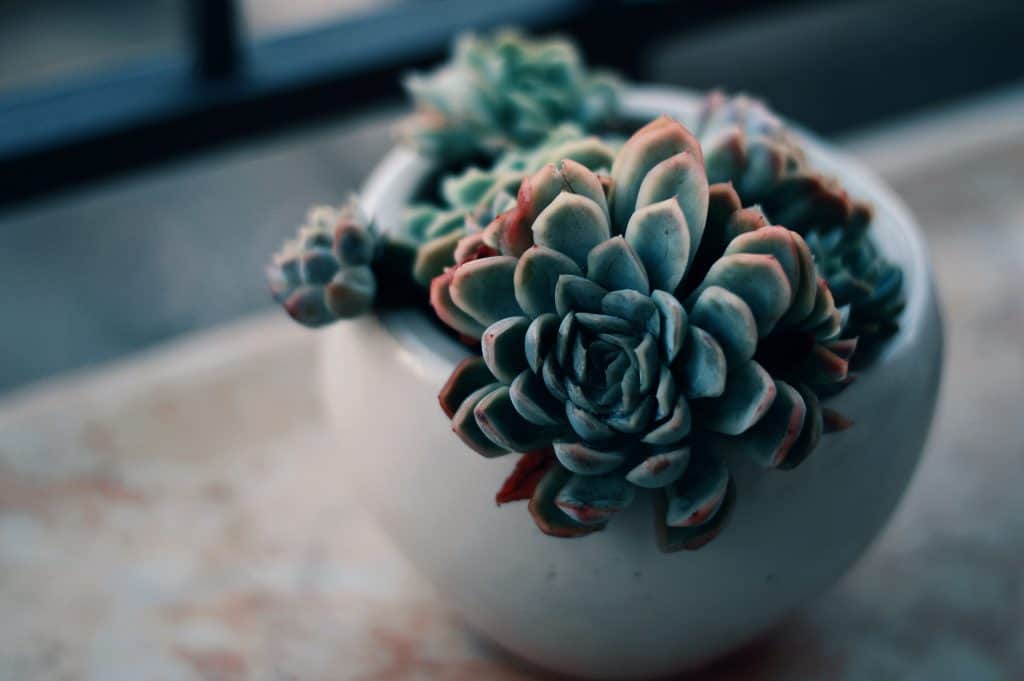
How to Grow Succulent Plants Indoors
Many people adore succulents. They are fairly easy to care for, making them great options for indoor gardeners who are just starting out. But even experienced plant growers appreciate the low-maintenance nature of succulents. If you want to grow succulent plants indoors, here’s what you need to know.
How to Grow Succulent Plants Indoors
Growing succulents indoors isn’t overly challenging. However, you want to use the right approach to ensure your succulent plants remain healthy and get a chance to flourish. Having the best soil for indoor succulent plants, choosing the right pot, and giving them the proper care are all essential for indoor gardeners. Here’s how to make sure you hit the right marks.
Choosing the Best Soil for Indoor Succulents

The best soil for indoor succulents is one that facilitates drainage. Succulents aren’t designed for incredibly damp soil, as they are native to drier environments.
In many cases, your best bet is to start with a ready-made cactus or succulent potting soil mix if you want to grow succulent plants indoors. At times, that alone might be enough, particularly if your indoor environment is fairly dry. Here are a few options that can work:
- Superfly Bonsai Succulent & Cactus Soil Mix
- Hoffman Organic Cactus & Succulent Soil Mix
- Miracle-Gro Cactus, Palm & Citrus Potting Mix
However, if you’re worried about moisture, you can go a step further. Adding in some extra grit, sharp sand, pumice, or perlite can ensure proper drainage. Plus, those materials don’t break down over time, so you won’t have to worry that the soil won’t be ideal in the coming years.
The Best Pots for Indoor Succulents
When you choose pots for indoor succulents, the process isn’t unlike other indoor plants. Along with good drainage holes, you want to make sure they are the right size. Without ample room, your succulents might not grow as well as you’d like.

Additionally, look for breathable pot materials. Options like ceramics and terra cotta are ideal, as succulents prefer good airflow around their roots, and those will do that job best. Otherwise, you might find your succulents are plagued with root rot.
If you’re looking for some solid choices, here are a few to consider:
- Rectangle Ceramic Succulent Planter Pot
- White Round Succulent Pots Set of 3
- Animal Ceramic Succulent Planters Set of 6
- Colorful Ceramic Succulent Planters Set of 4
- Terra Cotta Egg-Shaped Planters Set of 9
Caring for Indoor Succulents
Offering the right level of care to your succulents usually means backing off a bit. These plants are hardy by nature, so you don’t have to coddle them like you would with an African violet. Essentially, you only want to water them enough to prevent them from shriveling up.
In most cases, you’ll want to water them to the point where the soil can dry out fairly quickly. Then, after the soil has been dry for a few days, water again, and repeat. Whatever you do, don’t water daily. If you do, there’s a good chance you’ll overwater, and your succulents will die.
Additionally, you want to ensure dissolved minerals or fertilizer residues don’t build up. If you use rainwater or distilled water on your succulents, that can make sure that it doesn’t happen. Usually, you’ll only need to add fertilizer annually, particularly if you live in an area with colder and darker winter months. Just add some in the spring or summer.
Now, the one area where you need to be diligent is lighting. Indoor succulents require a significant amount of sunlight. Make sure to place the pots in windows that get a few hours of daylight each day. If you’re worried about scorching, opt for a west- or south-facing window and use a sheer curtain to filter some of the light. For succulents that aren’t prone to scorching, an east-, west-, or south-facing window can work, with or without a sheer curtain.
Things to Consider with Indoor Succulents
Different succulents have different needs. When you are choosing plants, you want to make sure that you select succulents that can thrive in your indoor environment.
In most cases, brightly coloured succulents – such as the red and purple varieties – require the most sunlight. If you have windows that bring in a ton of sun, those can be great choices. But, if you don’t have a great window or the amount of sunlight that comes through during the winter months is low, opt for green succulents or look for options that have lower light needs. That way, you can keep your succulents healthy and vibrant.
Additionally, be aware that even well cared for succulents can experience some shriveling. Like other plants, leaves may die on occasion. If you are only seeing it on the lower leaves (those near the soil), you could just be experiencing what happens naturally. Just be aware that shriveling near the top or center of your succulent could indicate a problem, such as over- or under-watering.
But, if you follow the tips above, anyone can grow succulents indoors, including inexperienced gardeners. With the right soil, pots, plants, and care, you can maintain a vibrant succulent garden inside, no matter where you live.


